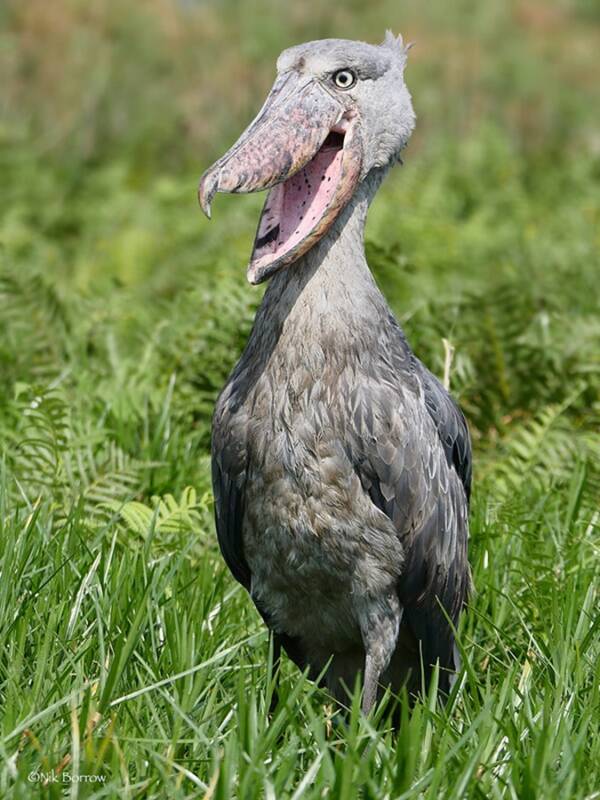
To ensure there are collective measures laid down to ensure the illegal invasion of the Wetland by the agro pastoralists is controlled to allow the flourish of the wetland’s wildlife. To ensure there are alternative income generating activities trained and adapted by the villagers especially the youth and women in order to reduce the overdependence to the natural resources found within the wetland. To recruit and trained 20 Community Conservation Champions nearby Shoebill stork habitats and they will work to raise awareness among their communities, monitor and protect its population in an effort to help restore the population. These groups will be supported to protect and rehabilitate at least 20 identified sites where the remaining Shoebill storks are commonly seen. To organize indigenous communities residing within and adjacent to the swamps into 20 conservation groups called site support groups (SSG). To identify and map natural habitats within Swamps where Shoebill stork live and sensitize the community on need to protect these habitats from bush fires and hunting for bush meat. Formulation of Shoebill stork management bylaws that will improve legal protection of its habitat at local level. To escalate Shoebill stork conservation education and communication to the Malagarasi-Muyovozi Wetland surrounding villages (Youth and Women) for proper Shoebill and its habitat management. Shoebill Stork are hunted as food in some places, and in others, they are hunted because they ’re considered a bad auspice.Enhancing the conservation status of Shoebill Stork (Balaeniceps rex) by restoring its habitat and supporting its population significant across Malagarasi-Muyovozi Wetlands in Uvinza district, Kigoma region, Tanzania. Agrarian burning and pollution from the oil painting assiduity and tanneries also affect their territories. The International Union for the Conservation of Nature estimates that there are only between,300 and,300 adult Shoebill Stork left in the world, and the population is going down.Īs land is cleared for pasturage, niche loss is a major trouble, and occasionally cattle will champ on nests. Only one juvenile generally survives to fledge. sprats have bluish-argentine down covering their bodies and a lighter colored bill. This includes incubating and turning eggs, and cooling them with water they bring to the nest in their large bills. Ladies lay an normal of two eggs at the end of the stormy season.Īsco-parents, both catcalls tend to the eggs and youthful. parentage dyads make nests on water or on floating foliage, and can be over to eight bases wide. These catcalls are veritably solitary in nature, however, and indeed sleeping dyads will feed at contrary sides of their home. Shoebill Stork reach maturity at three to four times old, and breeding dyads are monogamous.

sprats occasionally make hiatus- suchlike sounds when they ’re empty. They keep cool with a fashion called gular fluttering - wobbling the throat muscles to dissipate heat. Though they ’re substantially silent, Shoebill Stork occasionally engage in bill- clattering, a sound made as a greeting and during nesting. They do partake traits with storks and herons, like the long necks and legs characteristic of wading catcalls, though their closest cousins are the pelicans. Shoebill Stork are in a family all their own, though they were formerly classified as storks. The catcalls exercise a stalking fashion called “ collapsing, ” which involves submersing or falling forward on their prey. Shoebill Stork can stay motionless for hours, so when a unhappy lungfish comes up for air, it might not notice this murderous Neolithic- looking raspberry brewing until it’s too late.

They also have long, thin legs with large bases that are ideal for walking on the foliage in the brackish morasses and wetlands they inhabit in East Africa, from Ethiopia and South Sudan to Zambia. Reaching up to five bases altitudinous with an eight- bottom wingspan, Shoebill Stork have unheroic eyes, argentine feathers, white bellies, and a small feathered crest on the reverse of their heads. It indeed snacks on baby crocodiles and Nile cover lizards.Īt first regard, shoebills do n’t feel like they could be ambush bloodsuckers. Its technical bill allows the Shoebill Stork to snare large prey, including lungfish, tilapia, eels, and snakes. Tan with brown specks, it’s five elevation wide and has sharp edges and a sharp hook on the end. What makes the aptly named shoebill so unique is its bottom-long bill that resembles a Dutch clog. Depending on your perspective, a Shoebill Stork either has the same frothy charm as the long- misplaced fogy or it looks like it might go on the attack any moment.


 0 kommentar(er)
0 kommentar(er)
